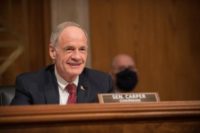A federal program that allows foreign investment in U.S. construction projects, including some in New York City, in exchange for an eventual green card has begun to raise concern for the Obama Administration, according to a recent article in The New York Times. The Immigrant Investor Program, dubbed “EB-5,” was created in 1990 to stimulate the economy and create jobs through capital investment, but critics contend that the program has fostered “unsavory practices” in recent years, according to the Times, which examined the program.
Under EB-5, foreigners must invest in a new commercial enterprise and create or preserve at least 10 full-time jobs for qualifying U.S. workers within two years of the investor’s admission to the U.S. as a conditional permanent resident. Program participants may choose one of two required minimum investments for projects: a general investment minimum of $1 million, or a targeted employment investment of $500,000 for a project in a rural area or one with high unemployment.
EB-5 “is a godsend and can mean the difference of a project going forward or not,” says Richard T. Anderson, president of the New York Building Congress. With the poor economy, developers are especially eager to secure funding for their projects, and the program has helped, he says. “It is a wonderful source of fresh capital for New York development projects” and is becoming more common in the city, he adds.
However, the number of applicants seeking to qualify for the $500,000 investment has skyrocketed since 2009 to more than 3,800, spurring closer scrutiny of the program, the Times article suggests. The article cites federal and state records showing that, through gerrymandering practices, new development zones are emerging that are “stretching” the qualification boundaries for EB-5 funding. Projects at sites in question over EB-5 funding include Extell Development Co.'s 700,000-sq-ft International Gem Tower at 44 W. 47th Street in Manhattan; and Forest City Ratner Cos.’ Atlantic Yards project in Brooklyn, according to the article.
Neither Extell Development nor Forest City Ratner would comment on the article.
NYBC’s Anderson says he was not aware of the issues surrounding the funding. “What [EB-5 funding] means in terms of immigration policy and things like that is a different story, but in terms of area projects” it helps, Anderson says.
The program is a “valuable tool,” says Empire State Development in a statement. It serves “to support job-creating projects that will put areas of high unemployment on a continued path to economic recovery and growth.”




Post a comment to this article
Report Abusive Comment